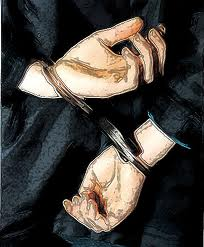Counterfeit money. According to the United States Secret Service, $261 million in counterfeit currency was removed from circulation last year and 3,028 arrests for counterfeiting were made.  Given the numbers we are exposed to in terms of government spending and debt reduction, these numbers hardly seem significant. However, they represent only the result of successful attempts to combat counterfeiting, not how much counterfeiting actually occurs.
Given the numbers we are exposed to in terms of government spending and debt reduction, these numbers hardly seem significant. However, they represent only the result of successful attempts to combat counterfeiting, not how much counterfeiting actually occurs.
It is impossible to calculate the actual number of counterfeiting operations. Advances in digital technology have made it possible for virtually anyone to produce fake bills in the privacy of their own home. A $1,000 laser-jet printer and some attention to detail will enable almost anyone to produce passable-quality U.S. currency. 63 percent of the counterfeit money removed from circulation last year was produced via digital printing means. As recently as 1995, that number was less than 1 percent.
The availability of digital technology allows more people to counterfeit. And these individuals can easily pass the fake currency they produce directly into circulation, having no need for others to launder large numbers of bills. 'Home grown' counterfeit bills are therefore, less likely to be seized and more likely to circulate freely. In fact, the Secret Service admits that its domestic seizure rate has steadily decreased as more digital technology is employed, from a 70 percent domestic seizure rate in 1995 to less than 20 percent last year.
Notwithstanding the fact that the amount of currency removed from circulation last year doesn't seem all that significant, counterfeiting is a serious problem, posing a threat not only to the financial well-being of individual organizations and the overall economy, but to national security as well.
History tells us that counterfeiting has long been used as a weapon during conflicts; it is estimated that during the U.S. Civil War approximately one-third of all money in circulation was counterfeit because the Confederate States employed it in an effort to collapse the Union economy. As well, counterfeiting makes it much simpler for drug gangs and terrorist groups to "make" money to support their causes, all of which threaten national security.
Detection of counterfeit currency is, therefore, essential to the health of our economy and, by extension, the national security of the United States. In fact, the Secret Service states (at www.secretservice.org) that "The public has a role in maintaining the integrity of U.S. Currency." There are tools available to businesses or any organization that receives cash (e.g., banks, retail, fast food restaurants, etc.) to detect counterfeit bills. Unfortunately, the most commonly used counterfeit money detector used these days is still eyes of the cashier who actually receives the bills.
The Secret Service recommends that the receiver of a bill should carefully review the bill received, compare a suspect note with a real one, and pay attention to the quality of the paper and printing, focusing on differences, not similarities. Of course, the real-world application of this type scrutiny is problematic. Imagine how you, as a customer, feel when the cashier examines your note - holding it to the light, testing the paper and scratching or rubbing the inks to see if it is a fake. In fact, this type of practice typically cannot be tolerated at the check-out lane, not only because fo the insult it may cause to the customer, but because of the time it takes. Nobody has the time to stand in check-out lines, and cusotmers get iritated when the wait is normal, much less when it is slowed because the cashier is manually testing every banknote they receive.

So what type of counterfeit money detectors are out there? The answer is: there are many. They range in complexity (and cost) from those that rely heavily on visual verification by the cashier, to the more technologically advanced that can automatically recognize and tally the notes that they test.
Because currency counterfeiting has become such a prevelant practice, and because the counterfeits produced these days can be too difficult to detect, it makes great sense to have a counterfeit money detector at your transaction counter. If you want to know how to choose the best detector for your needs, stay tuned to our blog. Our next several articles will be a discussion of different types of detectors, and how they differ from each other.


